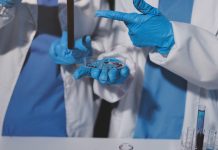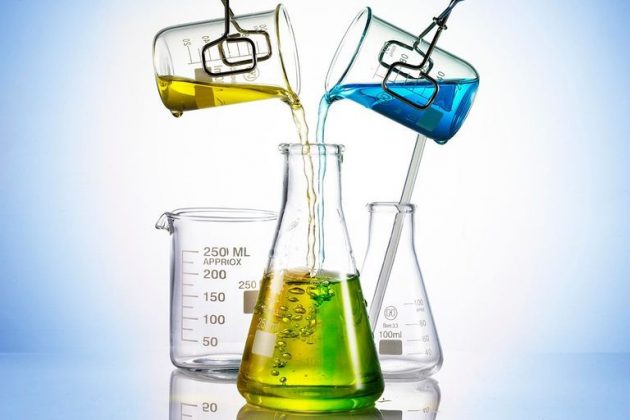This month, our columnist provides a rundown on Artificial Photosynthesis, which has the potential to power our planet in the post-oil era. Advances in nanotechnology, material sciences and structural biology are helping us to not only mimic natural photosynthesis, but also improve its efficiency. The race is on to invent inexpensive, eco friendly and efficient catalysts.
Artificial Photosynthesis is currently the holiest of Holy Grails for the human race. By solving the twin problems of energy and environment, we can hope to extend our lease on planet earth. Artificial Photosynthesis seeks to mimic the naturally occurring process in plants and harness the power of solar energy to produce renewable fuels that will sustain our civilisation in the post-oil era.
Photosynthesis
Photosynthesis occurring in nature is an extremely complex process involving a number of steps, that are yet to be fully understood. In the first step, large antennas of light-absorbing molecules, such as chlorophyll, harvest sunlight and transfer their energy to the reaction centre. Photosystem II, a protein complex, uses the energy of photons to strip electrons from water molecules, thereby splitting them into hydrogen ions and oxygen. While oxygen gas is expelled into the atmosphere, the electrons and hydrogen ions are passed down a chain of proteins to synthesise Adenosine Triphosphate (ATP) and finally build sugars from carbon dioxide and water using enzymes.
There are two ways in which we can tap the potential of artificial photosynthesis. First is to stop after the intermediate step and use the hydrogen generated by splitting of water, as a clean fuel to power the much touted hydrogen economy. But since hydrogen handling and storage are cumbersome, it would be prudent to allow the photosynthesis process to continue its course and manufacture fuels in liquid or solid form. This is done by using the hydrogen generated to reduce carbon dioxide to carbon monoxide and produce methanol, for example, or further long chain carbonaceous compounds. The obvious advantage of this is that it uses up carbon dioxide from the atmosphere, thereby providing a welcome mitigation of global warming.
There are two approaches to artificial photosynthesis. One approach is to tinker with the biological processes and supplement them with synthetic materials. This semi-artificial method seeks to achieve synergy by combining natural processes with novel materials. The second method is to replicate the natural process externally using shapes and structures similar to that occurring in the cellular world. This approach leverages the extraordinary leaps we have made in nanotechnology and material sciences. Both the approaches have the objective of improving the efficiency to commercially scalable values.
Semi-artificial Photosynthesis
Semi-artificial Photosynthesis uses a hybrid system combining natural enzymes and synthetic materials to obtain a synergistic boost in the conversion of solar energy. It marries the self-healing properties of natural materials and the robustness of synthetic materials. Photosystem II, the naturally occurring protein complex, has been integrated with synthetic light absorbers, thereby enhancing the efficiency of the water-splitting reaction. Further, Photosystem II, synthetic light absorbers and polymers have been wired up to facilitate faster flow of electrons.
Hybrid systems widen the spectral range of the absorption of sunlight and increase the efficiency of reaction pathways. With improved understanding of structural biology, it is now possible to engineer enzymes for improved biocatalytic efficiency. Recent reports describe a biohybrid system in which nanoclusters of a biocompatible material like gold are incorporated inside bacteria to achieve intimate contact between photosensitisation and reaction pathways to speed up the electron transfer. Combining biological and inorganic materials is a challenge that hybrid systems have to overcome.
Another exciting development concerns hydrogenase, an enzyme occurring in algae, with the ability to split water. But since it was not necessary for survival, the plant genetically switched off the enzyme’s activity. After lying dormant for several millennia, researchers have now found ways to reactivate hydrogenase. Coupling hydrogenase and Photosystem II have yielded promising results.
Artificial Photosynthesis
Artificial Photosynthesis requires catalysts, not only to replicate the natural process, but also to raise the efficiency from the abysmally low values. We have come a long way since the pioneering work of Fujishima and Honda in 1972, when they accomplished photocatalytic splitting of water using Titanium Dioxide. Graphitic Carbon Nitride and semiconductor-based oxides of Zinc, Iron, Copper, Cobalt, Tungsten etc. are some of the photocatalysts that have been studied in great detail by several researchers in recent years. Structural morphology of the catalysts is extremely important for their optimum performance. Catalysts are often used in the form of nanorod or nanowire. Today, advances in nanostructure engineering make it possible to tailor catalysts with specific activity and functionality. Nanoparticles made out of Porphyrin and Fullerene molecules have yielded good results. Some of the successful catalysts are expensive, toxic and made from scarce resources. The race is on to invent inexpensive, eco friendly and efficient catalysts.
Evolutionary Inefficiency
Natural Photosynthesis is an extremely inefficient process with barely 1-2% of solar energy converted into sugars. The chief culprit of this inefficiency is the enzyme RuBisCo, which incidentally is the most abundant protein on earth. But three billion years ago, when photosynthesis probably first happened, RuBisCo was effective because our environment had more carbon dioxide and less oxygen than today. Today’s higher concentration of oxygen in the environment has impaired the performance of RuBisCo. Many scientists are now seized with the task of modifying RuBisCo so that it functions more effectively in fixing carbon dioxide into sugars.
Plants have not improved the efficiency of photosynthesis despite having billions of years to do so. They are satisfied with producing just the right amount of food required for their survival. Are we right in tampering with nature to fuel our greed? It is an ethical question with no easy answers.
Path Forward
Artificial Photosynthesis is more than a century-old idea. Giacomo Ciamician, an Italian Chemist first postulated the concept in 1912 as an alternative to fossil fuels. Depleting fossil fuels and global warming has renewed our interest in artificial photosynthesis in recent years. Solar Cells have made stupendous progress and are almost at the theoretical limits of their efficiency. While solar cells provide only instant power, artificial photosynthesis can manufacture storable fuels and chemicals. Advances in nanotechnology, material sciences and structural biology are helping us in our quest for this Holy Grail. While much of today’s work has provided proof-of-concept in the laboratories, commercialisation appears at least a decade away.
Reader’s responses may be sent to k.sahasranaman@gmail.com or chemindigest@gmail.com

































